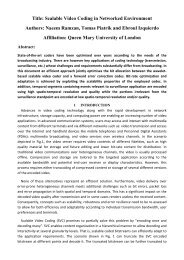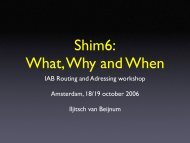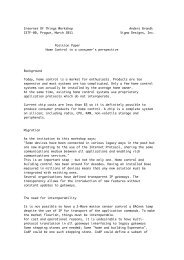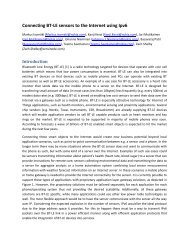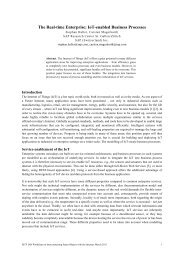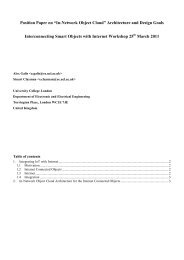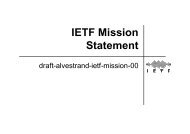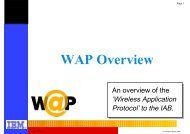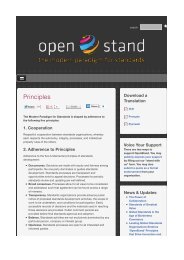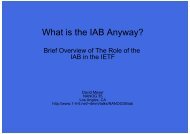IoT Workshop RPL Tutorial April 2011 - Internet Architecture Board
IoT Workshop RPL Tutorial April 2011 - Internet Architecture Board
IoT Workshop RPL Tutorial April 2011 - Internet Architecture Board
Create successful ePaper yourself
Turn your PDF publications into a flip-book with our unique Google optimized e-Paper software.
Routing Metrics in LLNs<br />
Specified in draft-ietfroll-routing-metrics<br />
Node Metrics<br />
Node State and Attributes Object<br />
Purpose is to reflects node workload (CPU,<br />
Memory…)<br />
“O” flag signals overload of resource<br />
“A” flag signal node can act as traffic<br />
aggregator<br />
Node Energy Object<br />
“T” flag: Node type: 0 = Mains, 1 = Battery, 2 =<br />
Scavenger<br />
“I” bit: Use node type as a constraint (include/<br />
exclude)<br />
“E” flag: Estimated energy remaining<br />
Hop Count Object<br />
Constraint - max number of hops that can be<br />
traversed<br />
Metric - total number of hops traversed<br />
Object can be used as metric and/or<br />
constraint - metric can be additive/max/..<br />
Link Metrics<br />
Throughput Object<br />
Currently available throughput (Bytes per<br />
second)<br />
Throughput range supported<br />
Latency<br />
Constraint - max latency allowable on path<br />
Metric - additive metric updated along path<br />
Link Reliability<br />
Link Quality Level Reliability (LQL)<br />
0=Unknown, 1=High, 2=Medium, 3=Low<br />
Expected Transmission Count (ETX)<br />
(Average number of TX to deliver a<br />
packet)<br />
Link Colour<br />
Metric or constraint, arbitrary admin value<br />
Copyright © 2009 Cisco Systems, Inc. All rights reserved.<br />
43



